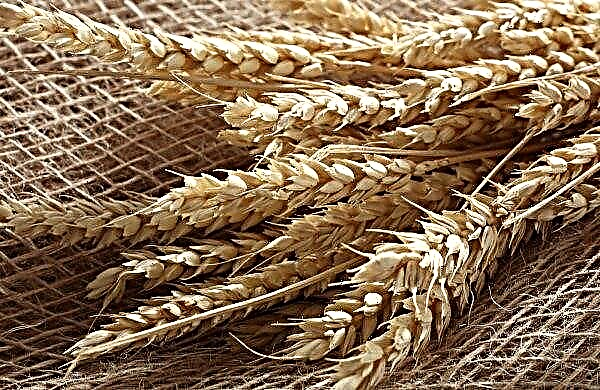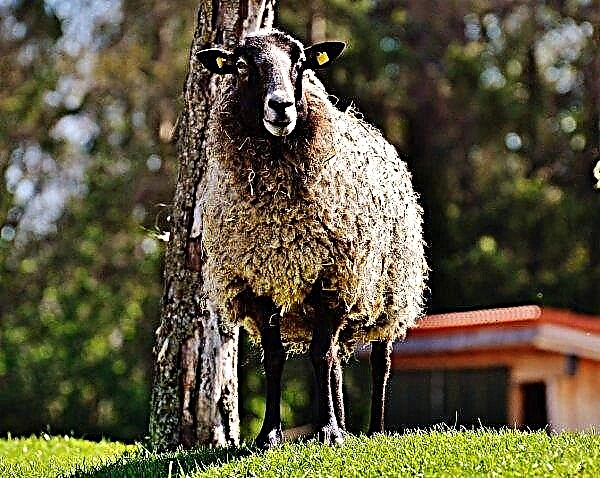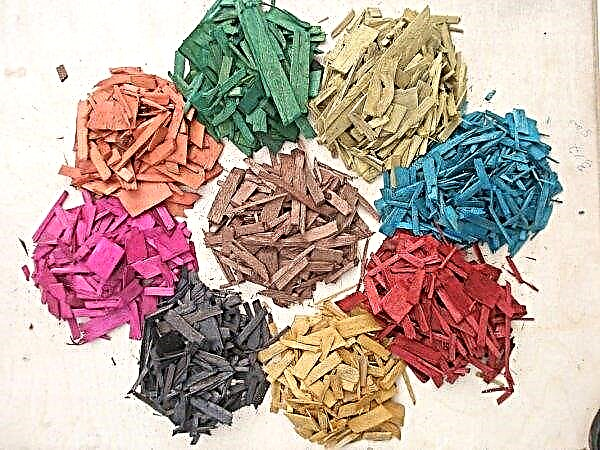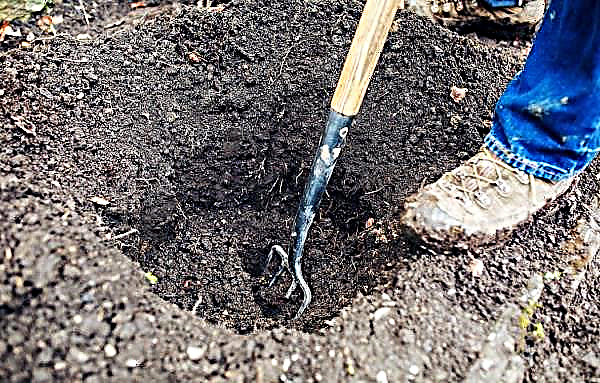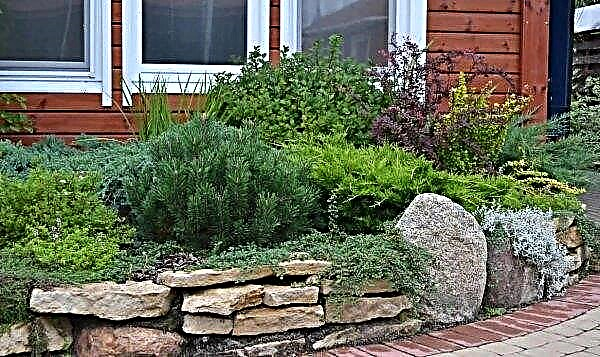Well-groomed dense grass is appropriate in any design project. Green lawns visually expand the space and create the effect of stylistic completeness. However, gardeners are not always able to achieve uniformity and color saturation of the coating. There is an opinion that the main mistake lies in the untimely sowing of grass mixtures. Is it possible to lay a lawn in the winter and how to do it right, find out from the article.
Is it possible to plant lawn grass in the winter
Many landowners are confident that the grass sown at the end of spring gives better germination, grows faster and builds up a strong root system in the cold. However, experts do not advise practicing this method of laying lawns, since the spring-summer scorching sun adversely affects juicy stems. As a result, instead of a dense green rune, the gardener receives drought-stricken bald lawns.

It is recommended to sow lawn grass exclusively in the fall, when there is enough moisture in the soil and air for seed germination, and the weather is stable and stable on the street. In such conditions, high germination and full development of shoots is ensured.
In addition, by the autumn period, most weeds will bloom, and their grains still do not have time to ripen and germinate. As a result, nothing prevents the growth of crops. If you plant a lawn in September and October, by the first frosts it will have time to take root and grow to 8–10 cm.Did you know? A lawn with an area of 200 m² is enough to provide 4 people with oxygen.

The only drawback of winter planting can be considered high risks of flooding the site with melt water. To avoid this, it is necessary to take care of quality drainage when preparing the territory for sowing.
Best deadlines for autumn planting
Experienced gardeners consider summer time to be the most unfavorable for sowing lawn plants and advise them to plant in early autumn. Then there is enough moisture in the soil and minimal risks of freezing seeds. In regions with a mild climate, these works can be planned even at the end of October, but do not delay it, waiting for the cold weather. Otherwise, the seedlings do not have time to grow stronger and do not winter.
The optimal conditions for winter sowing lawns experts believe:
- calm, calm weather (otherwise the grains will fly apart, because of which it will not be possible to achieve uniformity of sowing);
- air temperature above 0 ° C (it is advisable to sow herbs a month before the first frost);
- moderate soil moisture (during the dry season, it is recommended to moisten the site beforehand).

Seed selection
Many beginner gardeners mistakenly think that you can create a perfect lawn even from weeds. In fact, due to the thick, heterogeneous stiffness of the stems and different flowering periods, such grass is categorically not suitable for design landscaping projects.
Important! For home cultivation, it is better to choose herbal mixtures. Monocultures more Suitable for professional lawns.
Among the special purchase variations can be identified:
- monocultures (if you plant grass of one cultivar, you get a perfectly flat surface, it is much more expensive and has high requirements for care, as well as soil and lighting);
- grass mixtures (they are different combinations of lawn crops; among themselves they differ in their adaptability to heat, shade tolerance, winter hardiness, and growth rate).

When choosing seeds, experts advise you to be guided by the following rules:
- Initially determine the size and visual design of your lawn. If you need a green lawn as a decorative element, you can buy elite varieties of succulent park and meadow grasses (beechless rump, bluegrass, sheep fescue, clover). You can’t walk and run on them. With proper care, they will retain their freshness and beauty throughout the season. Keep in mind that the height of the grass cover on such a lawn should not exceed 3 cm. If you plan to admire the flowering coating, you need to stop the choice on Moorish mixtures. They are recommended for creating colorful flower lawns and do not require scrupulous care.
- Analyze the strengths and weaknesses of the future lawn. If he is exposed to sunshine all day, buy sun-loving herbs. In the case of an inevitable shadow, it is better to opt for plants adapted to such conditions. Always consider the features of your favorite culture and the specifics of the area for its growth.
- Be sure to pay attention to the availability of international certificates when buying grains.. They are a sign of product quality. Also check the compliance of the grass with the climatic conditions of your region and do not forget about its requirements for soil composition, lighting, humidity. It is important to take into account the intensity of the load on the lawn.
- Pre-measure the area of the plot to determine the right amount of seeds. If you plan to sow manually, count on 5 kg of planting material for each hundredth of the allotted territory.
Step-by-step instructions for autumn lawn sowing
A beautiful lawn requires not only regular maintenance, but also competent site preparation, scrupulousness in observing agrotechnical rules when sowing seeds.
Important! When buying seeds of lawn grass, always choose varieties with high frost resistance.
Site preparation
This stage is the basis for quality coverage. Without proper preparation, it is impossible to achieve a perfectly even, uniform surface of the green carpet. To get it, you need to start work a month before landing.
First, it is important to clean the area of debris, stones, waste vegetation and stumps. If there are too many weeds in the area, be sure to treat the soil with herbicides. If necessary, repeat the procedure, otherwise the weeds will drown out the growth of the crop. The harvested area needs to be dug up and rake from the soil to remove the remains of rhizomes, garbage, stones.
Rammer
The next stage of arranging the lawn is tamping the prepared site. It is advisable to carry out it immediately before sowing the grass using a hand roller, weighing 100-50 kg.
As an alternative method, compaction of the soil with its own weight is suitable. To do this, you need a long board, the width of a human foot. Shifting it throughout the territory, with frequent steps, walk from one end to the other.Did you know? Lawns in the local area are able to lower the air temperature by + 10 ° С.
 Tamping the area allotted for landscaping is necessary only in dry weather. It is important that the earth is not wet, otherwise weak sprouts will not be able to break through the formed tight crust.
Tamping the area allotted for landscaping is necessary only in dry weather. It is important that the earth is not wet, otherwise weak sprouts will not be able to break through the formed tight crust.
After tamping on the ground you can not get up. If there is such a need, attach planks to the soles of your shoes like skis. For 2-3 days before planting the grains, water the area abundantly.
Herbicide treatment
This procedure is mainly used in heavily littered areas. If desired, it can be replaced by reusable deep digging, followed by careful collection of rhizomes of unnecessary vegetation.
Many beginner gardeners avoid chemicals, mistakenly believing that herbicides burn lawn plants. In fact, these drugs only inhibit the synthesis of specific substances, as a result of which the grass cannot develop and dies.
Important! High humidity reduces the effect of herbicides, so when using them, keep in mind that for high efficiency of the active substance it is important that at least 4 hours pass from the moment of treatment to the nearest rain.
When choosing herbicides, it is important to pay attention to the type of action:
- the general (“Tornado”, “Roundup”, “Agrokiller”, “Ground”, “Typhoon”, “Arbonal”) - is aimed at destroying absolutely all plants, including lawn plants (among the constituents there is necessarily glyphosphate that can accumulate in the soil );
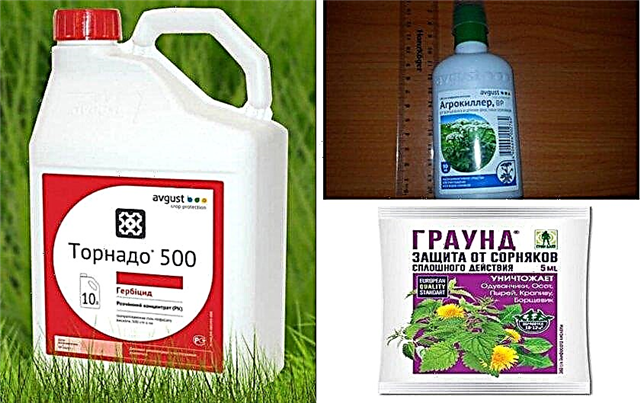
- selective (“Propolol”, “Lapis lazuli”, “Zenkor”, “Lontrel”) - only weeds die, and the desired crops continue to develop (their effectiveness depends on the active substance and the type of weeds, with regular use they cannot accumulate in the substrate).
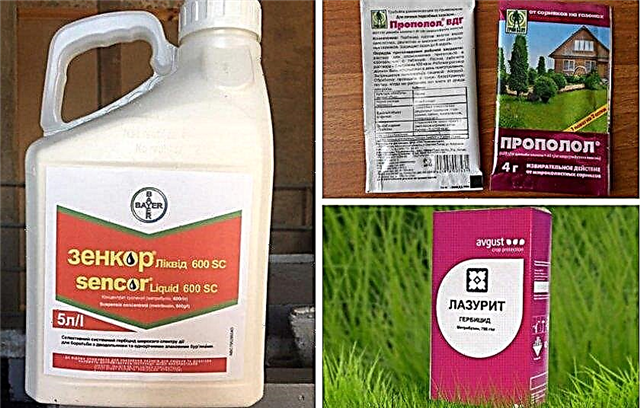
In the case of intensive growth of weeds, the site will need to be sprinkled several times. This is due to the fact that because of the different depths of the seeds, the drug can not get on them the first time. Therefore, in the overgrown area, it is recommended to initially mow tall grass and sprinkle with herbicide. Repeated treatments are recommended after 7–10 days. Sowing lawn crops is possible only when the weeds completely die. Their remains must be removed from the site.Important ! In order not to damage neighboring vegetation, the sprayer must be set to a minimum spray at low pressure. The solution should not come with an umbrella, but vertically.

Fertilizer and soil preparation for lawn
The quality of a personal green lawn will depend on the literacy of your further actions. To avoid mistakes at the stage of laying the lawn, follow the rules below:
- Prepare the substrate. Loosen the area immediately before sowing. If previously it was dug up using a walk-behind tractor, it is enough to cultivate it. Wait for the top coat to dry.
- Be sure to analyze the composition of the soil on the site. If it is heavy, clay, you will need to make a mixture of river sand and fine gravel (fraction up to 4 mm). Poor sandy soils should be enriched with compost or humus.
- It is recommended to plant lawn grass in soil with an optimum acidity of 5.5–7 pH. In case of excessive oxidation, it is important to carry out liming in the proportion of 150-300 g per 1 m² of area. Instead of lime, you can use dolomite flour, cement dust and even old plaster.
- Check that there are no wetlands or waterlogged areas on the site. If available, provide good drainage. To do this, remove about 15 cm of the upper fertile soil. Pour the prepared place with a layer, at least 20 cm thick, of gravel, pebbles, expanded clay or crumb brick. Pour up to 10 cm of river sand on top. Then fall asleep with the originally removed earth. If necessary, at this stage take care of the installation of drip irrigation.
- Two weeks later, when the soil on the planned lawn settles, level the territory, raking the bumps, and sprinkle irregularities if necessary fresh substrate.
- After the manipulations will not be superfluous improve the nutritional composition of the earth. During autumn sowing, lawn plants respond well to potash-phosphorus fertilizers. It is recommended that they be evenly distributed over the pre-moistened area and sealed with a rake.
Sowing
You can sow grass manually or using a seeder. Keep in mind that with autumn sowing of the lawn, seed consumption is twice as much as with spring. On average, about 70 grams of planting material will be needed per square meter.
Did you know? In the United States, a well-kept lawn near a house for sale gives a realtor the right to raise the price by 20%.
Work is carried out on a sunny, calm day according to this algorithm:
- 2-3 days before sowing, the prepared area is abundantly moistened.
- Grains are mixed in equal parts with river sand and evenly distributed on the territory. First along, then across. Large areas for convenience are pre-divided into squares.
- With the help of a rake, grains are embedded in the soil to a depth of 1-2 cm.
- Tamping the sowing roller.
- Sprinkle inoculation with a layer of high peat, 1.5 cm thick.
- Gently, avoiding a strong jet, water the area. It is better to do this with a small spray.

Care Features
The condition of the crops will affect the further growth of grass, so the first time they require special attention.
Winter lawn care includes the following activities:
- Watering. It is carried out to the extent necessary, taking into account weather conditions and the amount of soil moisture. Do not allow the site to completely dry out, as well as its bogging.
- Fertilizer. Nutrients affect the growth and color of the grass, therefore, during the growing season, regular feeding with nitrogen-containing substances with an interval of 14 days is recommended. To stimulate winter-hardy qualities, plants are watered with potassium-phosphorus compounds in September.
- A haircut. Do not allow an unaesthetic type of grass. Consider the intensity of its growth and make sure that the height of the stems does not exceed 3–5 cm. Some gardeners use unique heights of plants to create unique green figures on the lawn. The first pruning is relevant 6–8 weeks after sowing.
- Weed weeding. It is unacceptable that unnecessary vegetation be knocked out of the green carpet. It is destroyed mechanically or with the help of herbicides.
- Preventive spraying from pests. Lawns can often damage shrews, slugs, worms, caterpillars and other harmful insects. You can get rid of most of them with the help of contact-systemic insecticides ("Aktara", "Aktellik").

So, arranging the lawn and caring for it is not particularly difficult. In order to get a dense uniform carpet, it is important to observe elementary agrotechnical requirements and pay attention to crops in a timely manner.



